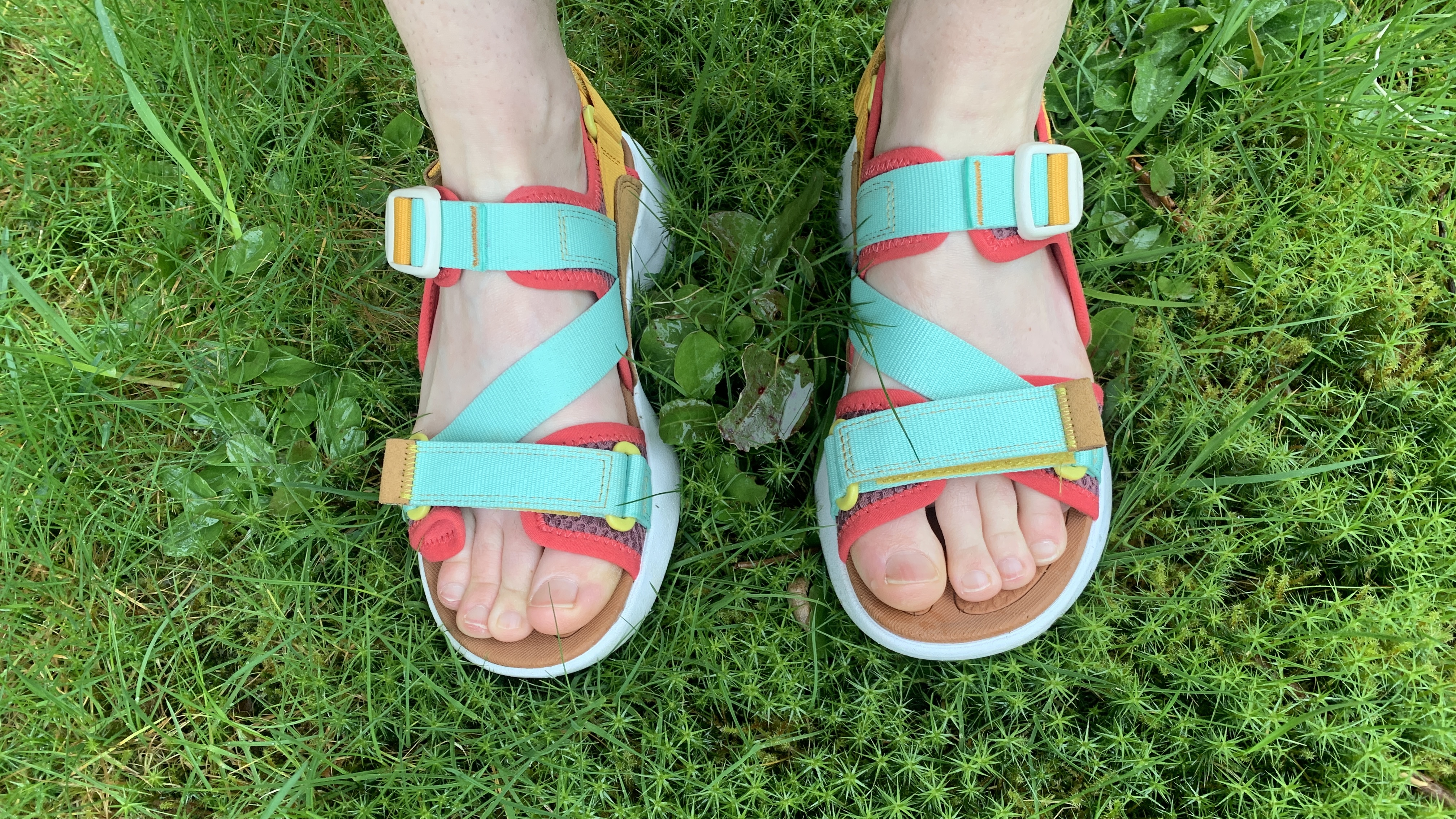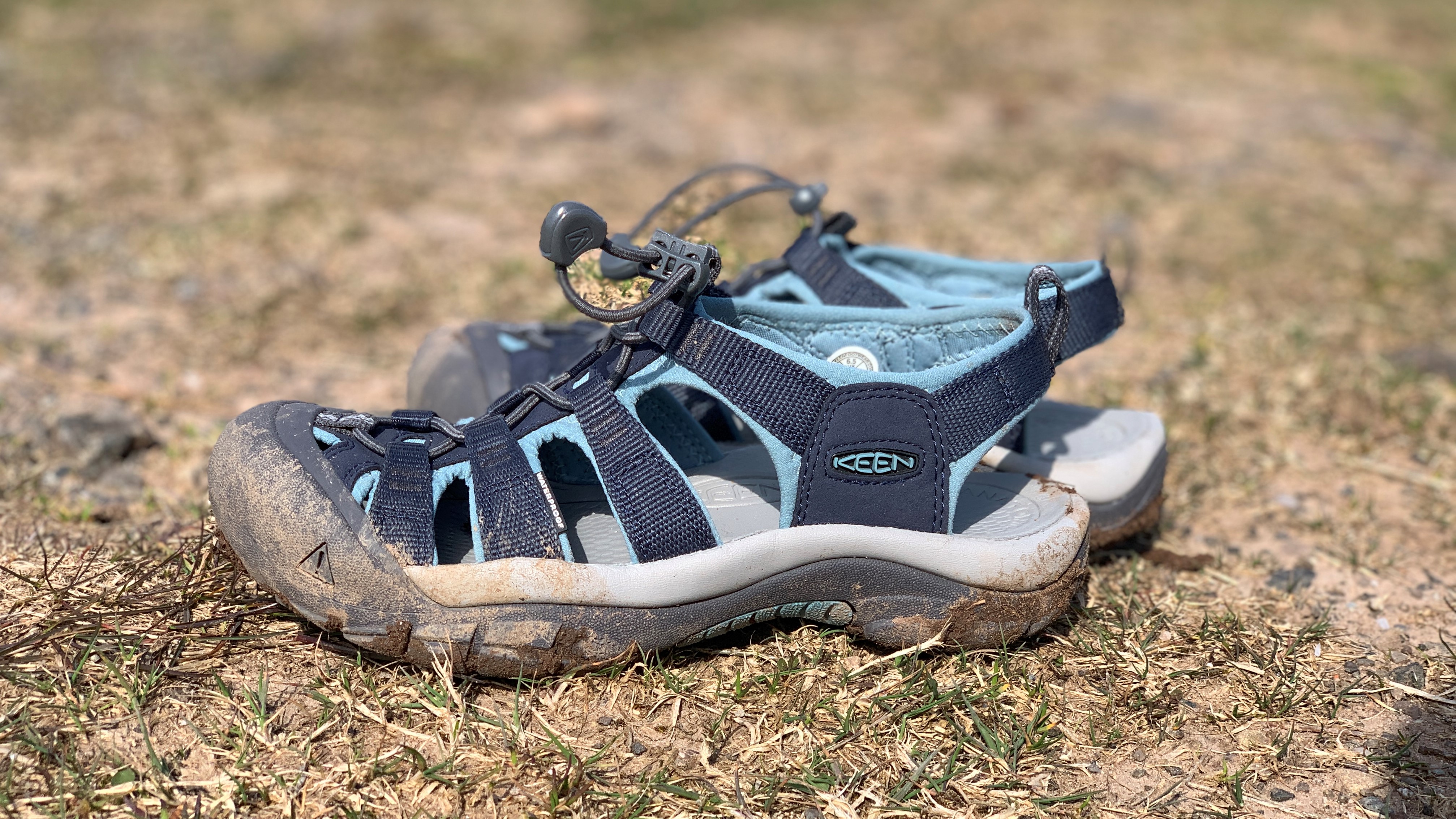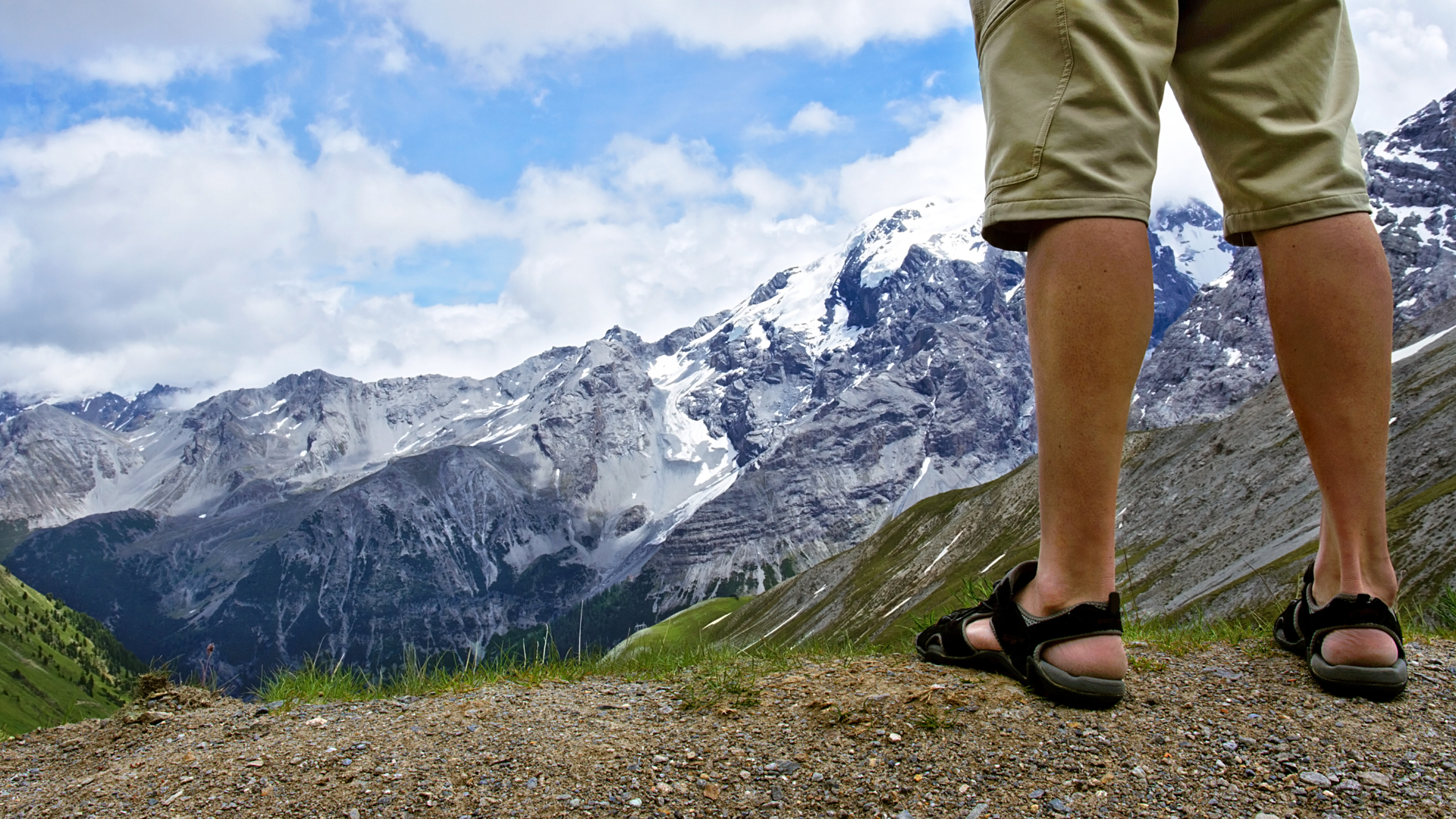
Hiking in sandals is nothing new. When moved out to Vail, Colorado in 2009, one of my best hiking buddies swore by her Tevas, which were well-worn and came with her on the exact same trails I was walking in trail running shoes.
I’d quickly learned that, when we weren’t hiking in snow, trail runners or hiking shoes were ample for Colorado’s trails and the clumpy hiking boots I’d bought when I lived in Vermont just disappeared into some abyss full of old ski gear, never to be seen again. But sandals? That seemed a step too far.
That’s not to say I wasn’t curious. I lived in the Rockies after all and spent my days hiking, rock climbing, biking and playing on the river. It was practically required that I own a pair of hiking sandals. I soon procured a pair of classic green Chaco sandals (the ones with the big toe loop) and felt like I was finally a mountain person. But after trying them out on the trails once or twice, I had to admit defeat. I didn’t love getting grit in my shoes, they were really fussy to adjust and my feet slid around a bit in them.
So I saved them for rafting trips and hanging out around town and went back to my trusty old shoes, pretty sure that I just wasn’t a hiking sandal person.
I am, however, a curious person, and my job writing for Advnture has meant that I’ve tried all kinds of footwear 2009 Julia would have turned her nose up at: barefoot shoes, trainers with huge rocker soles, yellow hiking boots. I also tested the Keen Newport H2 hiking sandals last summer, which I thought would make for a hilarious mishap article considering Scotland is home to endless bogs and not dry and dusty trails. But I liked them.

They moved much better with my feet than my old Chacos, offered considerably more toe protection and weren’t a hassle to adjust. But after the testing the period was over, they didn’t exactly elbow my Hanwag Makra Trek (winter hiking) or my Columbia Konos TRS Outdry shoes (summer) out of the way for top spot on my hiking footwear shelf. Instead, they became my festival shoes, handy for fun adventures where I might be doing a bit of cross-country walking and wild swimming but nothing too technical. I liked them, but not enough to wear them all the time (I will note here, however, that my brother with his wide feet wears his Newports 12 months a year).
This summer, I met another Keen sandal: the Elle Backstrap. Unlike the the Newports, which scream “I’m a hiker!”, Elle does not look up for the trails. It’s brightly colored, funky, and belongs on the beach. So I was well up for the challenge of testing them on rough trails, however, I didn’t want a sprained ankle, so I eased in with some straightforward hiking in mild weather in Corsica where I also needed a beach shoe. I was pretty happy with them – they have cushioning under the straps and don’t rub anywhere, which I’d never experienced with hiking sandals before.
Next I decided to uplevel things and took them on a hiking trip to Gran Canaria. I brought backup trail running shoes, mostly because I also wanted to run and was a bit scared my sandals wouldn’t be up to the challenge of steeper rougher trails. But they handled them like a pro, and again, it was thrilling to be able to go directly from the trail to the beach to the water and back to the trail without changing shoes. My poor old water shoes have been banished to the old gear abyss and probably don’t know what’s hit them. I also like that I can wear them as my main shoe on vacation if I don’t want to check a bag with extra shoes for going out at night.
Now that I’m confident in them, they’re my go-to shoe for any adventure travel where I’m not expecting winter conditions, or climbing a via ferrata. They’re comfortable, versatile and handle surprisingly well on the trails, and I’ve even worn them on some Scottish trails. After all, if my feet get wet walking through a bog, they dry quickly without socks and so do these sandals.

Who are hiking sandals for?
If you’d asked me about hiking sandals a couple of years ago, I’d have said they weren’t for me but I’ve changed my mind about them. They’re naturally breathable, quick drying, versatile and can be really comfortable if you find the right pair. Does that mean they’re right for you? That’s really for you to find out.
Based on conversations with friends and family who swear by them, and my own experiences, I think they’re a good option for anyone who just doesn’t get on well with a traditional shoe, and perhaps wants more padding underfoot than a barefoot shoe provides (though those are worth a look too).
They’re a good option if you’re seeking more breathability than a regular hiking shoe allows and also if, like me, you do lots of different activities or travel a lot and want something versatile, so you’re not carrying walking shoes, water shoes and flip flops everywhere you go. They can also be more technical than you might think.
Naturally, they’re better suited for weather that isn’t really cold, but even if you live in a place with harsh winters, they can easily be your summer hiking shoe.

Which hiking sandals are for me?
Clearly, I found my perfect hiking sandal in the Elle, but it won’t be for everyone and it also only comes in women’s sizing, which isn’t to say that only women can wear it. The Newport is a bit more functional in appearance and delivers better toe protection, so I’d recommend looking at that especially if you want something that you can wear on the river as well as the trail.
For a robust sandal built for more technical trails, the Merrell Choprock Sieve is the most sneaker-like sandal we’ve tested, while the Teva Hurricane XLT2 delivers a more stripped-down design for those of you who prefer a minimalist approach.
And if you’re looking for a sandal you can run in? Teva has just launched its first-ever trail running sandal and while I haven’t tried them on yet, now that I’m a convert I’ll be first in line.







